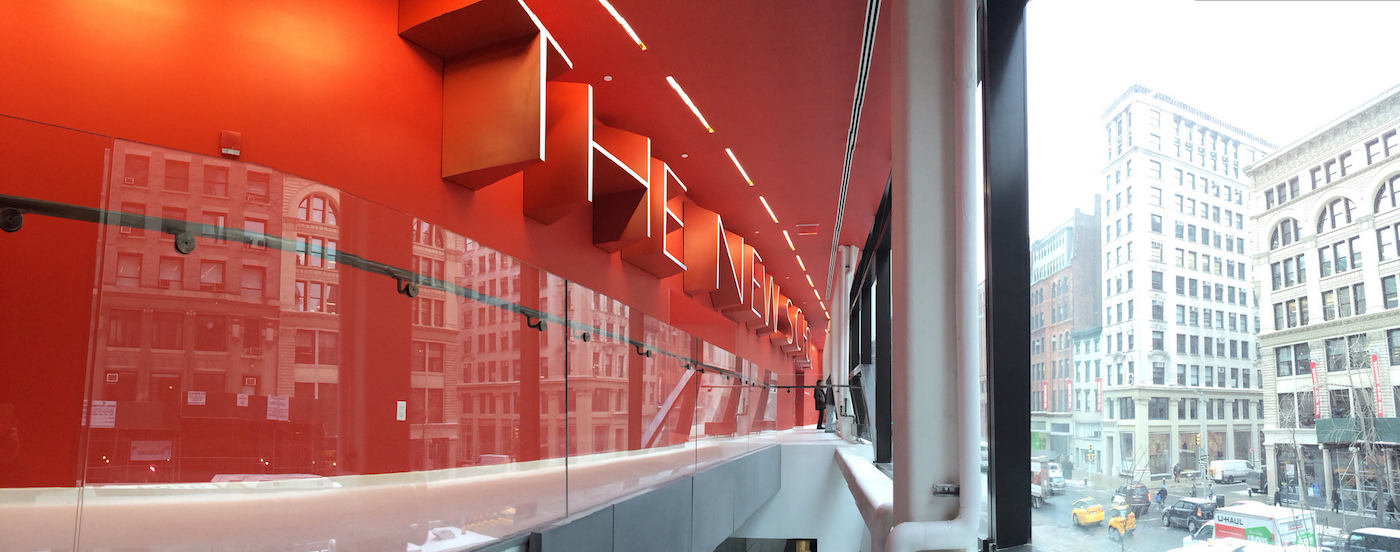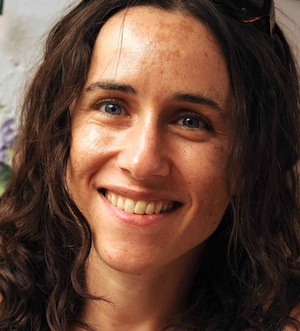
It’s that time of year: Journalism students are returning to campus, charting their courses for the next semester, and professors are fine-tuning their syllabi. Turmoil in the news business means that many professors are also reckoning with how to adapt their teaching approaches in an era of data visualization, apps, and distributed content.
 One department at The New School, however, doesn’t have to worry about history too much: Its Journalism + Design program launched in 2014. “We got to say, ‘What does it mean to do journalism in 2014 and moving forward?’ That’s our baseline,” said Heather Chaplin, director of the now one-year-old program.
One department at The New School, however, doesn’t have to worry about history too much: Its Journalism + Design program launched in 2014. “We got to say, ‘What does it mean to do journalism in 2014 and moving forward?’ That’s our baseline,” said Heather Chaplin, director of the now one-year-old program.
The new undergraduate degree program was created with the help of a $250,000 grant from the Knight Foundation (full disclosure: also a funder of Nieman Lab). Applying its startup funding approach to education, Knight’s aim was to encourage the New School to develop a new kind of journalism curriculum framed around the concept of design thinking. Students learn about data journalism and social media, among other areas, from instructors in The New School as well as guest faculty assembled from newsrooms around New York.
Chaplin said the goal is to use design thinking to prepare students for the future. “I’m not so much interested in specific skills as dispositions,” she told me. “Are we helping people be able to learn really fast, so when things do change they can move with it without completely freaking out?”
The program jumped from around 90 students in fall 2014 to 240 this semester. I spoke with Chaplin about the experience of building a j-school from scratch and how design thinking can change the way journalists do their jobs. Here’s a lightly edited transcript of our conversation.
I started realizing that one of our big advantages was having no legacy. There’s no fight, there’s no battle — there aren’t 50 tenured professors who still want to do things the way they did 25 years ago. 2014 was our first year of existence. We got to say, “What does it mean to do journalism in 2014 and moving forward?” That’s our baseline.
It just feels incredibly exciting. We’re not playing around with what we wish it were like to do journalism, or what we remember it was like to do journalism, but what it really is like to do journalism now. I can’t imagine trying to do that when you already have an enormous thing in place that you are trying to change.
The New School had this great liberal arts school, which is where I’m housed, and it had what is considered one of the best design schools in the world, but it wasn’t doing anything journalistic. So I wondered what would happen if you said, “Okay, this is journalism, and journalism is a distinct form of media that we believe needs to stay alive if we have any chance of having a free society.”
The idea that journalism is a set of values, and has a specific role to play in a free society: What if we took those traditional practices and mapped on top of them some design practices and design principles to help people be more imaginative, more nimble, better problem solvers? We could do the kind of journalism that might actually have a chance to flourish.Of course, that leads to the question of what “design” means. It’s a hard question. I’m writing a paper for the Tow Center right now about what we mean when we talk about design and why it’s even a thing.
Design can be thought of in a couple different ways for journalistic purposes. When people talk about design, they often talk about visuals, and visuals are obviously important. But we’re really talking about design beyond the visual.
You can think about design as audience engagement. Designers always start by asking who they are designing for and why. So when we think about audience engagement and wanting to know our audience, design as a discipline can really help us. I also think about design as new product development: Nobody knows how people will consume news as we move forward. What might it look like, and what are the newspapers of the future? Design processes can help us come up with that.
And I’ve started to think of design as civic journalism — the idea that the design thinking process starts with empathy or deep listening.What would a journalistic process look like that starts with assumptions on hold, preconceptions on hold, and just listening? It’s a bottoms-up approach to journalism: You’re out in the community that you’re serving, saying, “Hey, what do you need to know about, what are your information needs, and what’s going on in your world that we can help you understand better?” It’s not people sitting in a newsroom saying, “These are the things people need to know.”
When I taught last year, we started with listening exercises. The students spent a lot of time going out, doing research and interviewing people. Then we did brainstorming exercises to synthesize the themes we were hearing over and over.
We did things like POV statements and other exercises to try to understand who it was we were reporting for and how we could include them in the process. We did research into their media habits. Then we spent almost the whole semester working on a project.We predicted starting with 60 students last fall. We had, I think, 94 students our first semester and 165 our second semester. This fall, we have 240 students with a waitlist of 60. It’s just been extraordinary. I couldn’t meet the demand — the school wanted me to add a bunch more classes and a bunch more sections and I had to say I couldn’t, because of quality control.
Last semester, we had Andrew Losowsky, who’s now leading the Coral Project, teach something called “stealth journalism” — how journalism could exist in unexpected physical spaces. All semester, the students designed journalism to be in the Union Square subway stop.
This semester we have Benjamen Walker, one of the founders of Radiotopia, and the students are going to create a podcast series that we hope will be ongoing.The other great thing the Knight grant allows us to do is offer popup classes — these one-off, two-credit classes where we try to be on the edge or take on an interesting problem.
With the two-credit format, I’m able to bring in really high-level, top-notch people, because it’s a smaller time commitment. And the students can try something they might be interested in without committing their entire semester to it.
We try to do a lot outside of the classroom. We do a bunch of workshops. Last semester, we had Hong Qu, the CTO at Fusion, do a two-part workshop on the future of mobile video. We had Adam Sternbergh, who was then culture editor at The New York Times Magazine and now is a writer at New York, do a writing-intensive. And we had Andrew Donohue, the senior editor at the Center for Investigative Reporting, do a one-day design sprint on reimagining local beat reporting.
Because we’re an undergraduate program, the way I think about it is that there’s a certain group of students every year who are so talented and absolutely committed to becoming professional journalists. They’re going to go out and get jobs.
There are some students who just did this as an undergraduate experience. They may not necessarily become professional journalists. But the thing that makes me sleep well at night is that they will be good at whatever they do.
We’re helping our students be smart, creative, and able to work collaboratively. If we really believe that journalism is a collective activity, and that everybody is a journalist at different points in their life, then I feel good that these students, no matter what they do as a profession — when their moment comes to do an act of journalism, they’ll know how to do it.